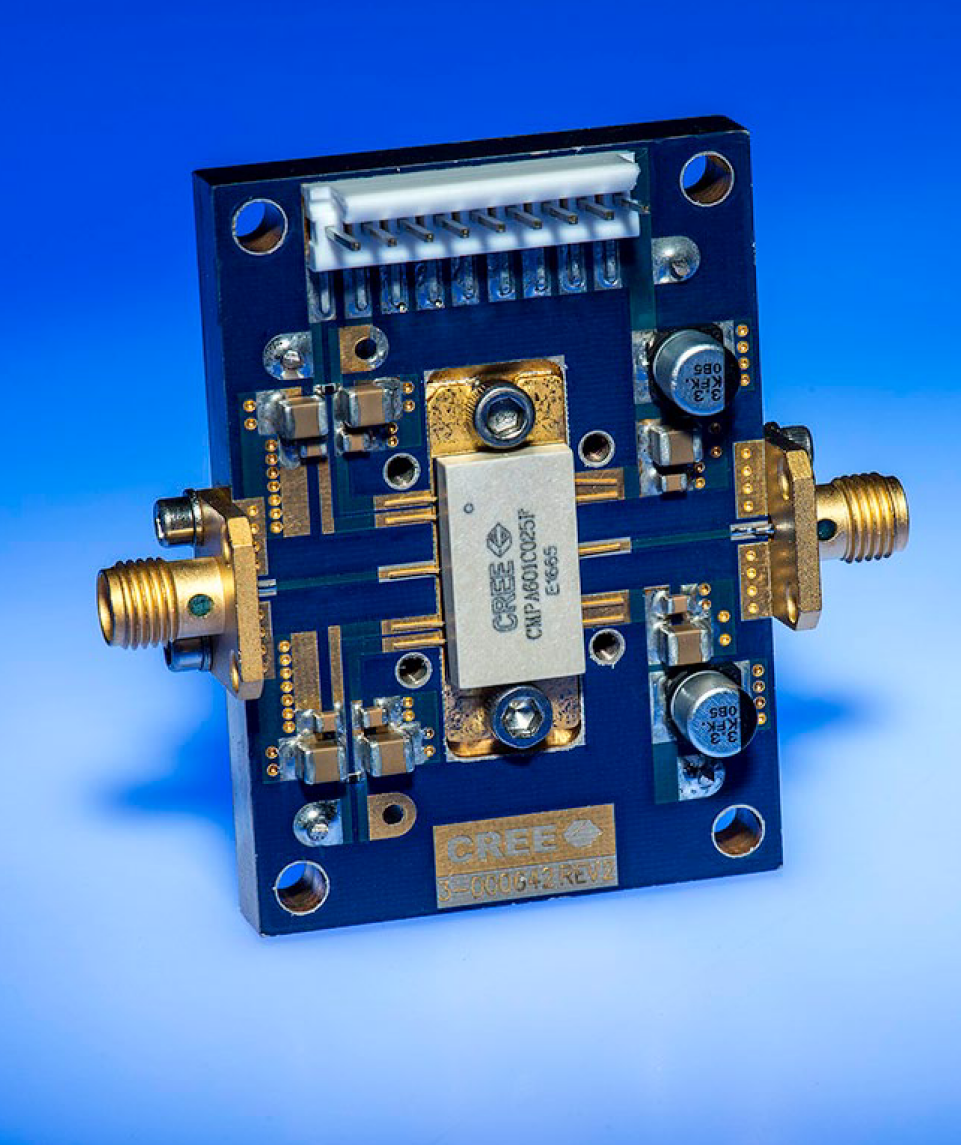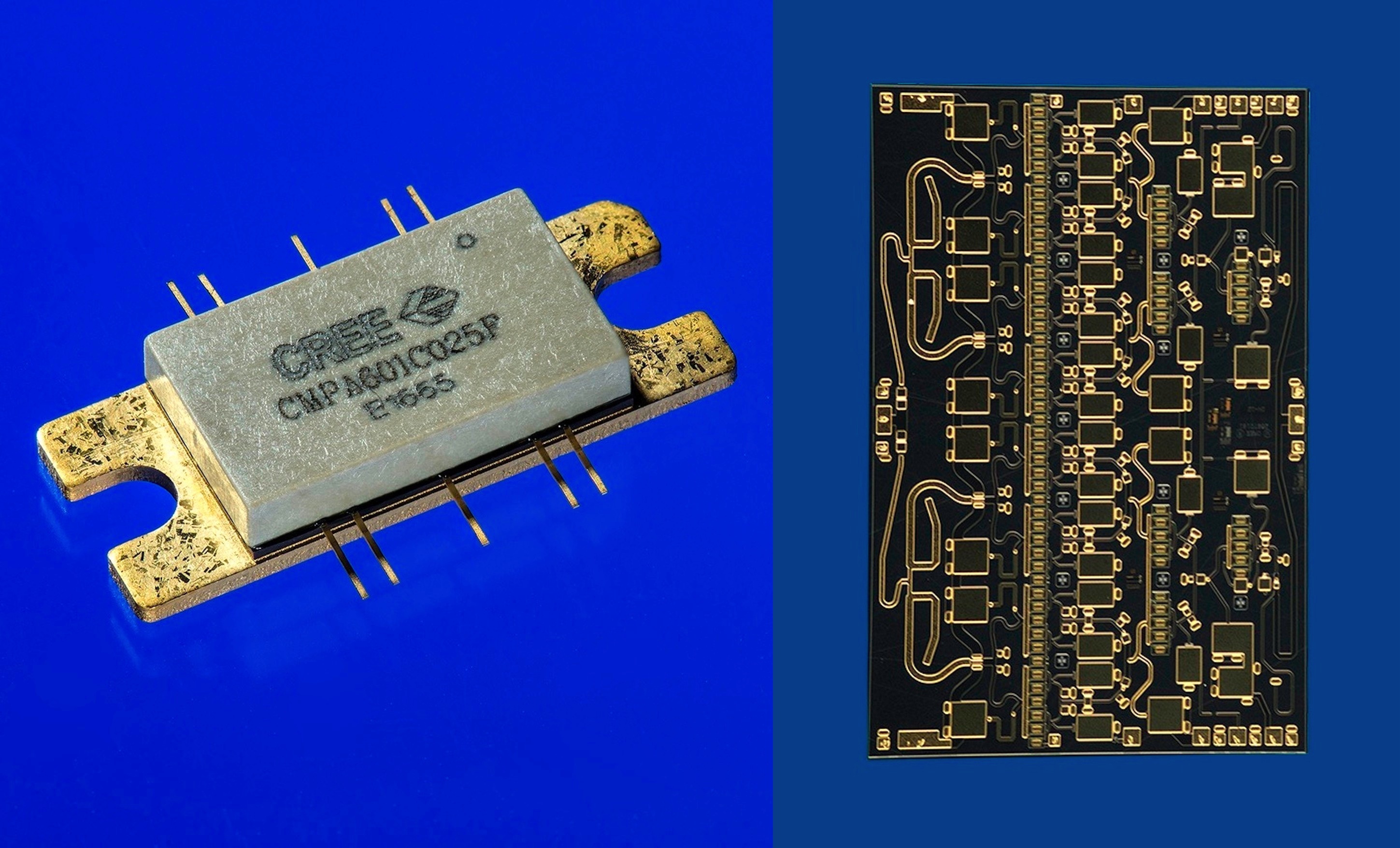 6 HEMT applications
6 HEMT applications
6.1 HEMTs in integrated microwave circuits
.
A Monolithic Microwave Integrated Circuit, or MMIC (sometimes pronounced "mimic"), is a type of integrated circuit (IC) device that operates at microwave frequencies (300 MHz to 300 GHz). These devices typically perform functions such as microwave mixing, power amplification, low-noise amplification, and high-frequency switching. Inputs and outputs on MMIC devices are frequently matched to a characteristic impedance of 50 ohms. This makes them easier to use, as cascading of MMICs does not then require an external matching network. Additionally, most microwave test equipment is designed to operate in a 50-ohm environment. Mini-Circuits' extensive selection of RF amplifiers offers many combinations of gain, noise figure, output power, and linearity in MMIC, surface mount, and connector packages.
Based on Cree GaN high electron mobility transistors (HEMTs), the new MMIC is built on a SiC substrate using a 0.25μm gate length fabrication process. GaN-on-SiC exhibits several superior properties compared to silicon (Si), gallium arsenide (GaAs), and GaN-on-Si, including higher breakdown voltage, saturated electron drift velocity, and thermal conductivity. GaN HEMTs also offer greater power density and wider bandwidths than Si, GaAs, and GaN-on-Si transistors (Fig. 6.3).


Fig. 6.3 GaN HEMT Monolithic Microwave Integrated Circuit (MMIC) amplifier (source: CREE)